World War II Bomber Builders Monument
Introduction
Text-to-speech Audio
Dedicated in 1998, this small monument near the Wyandotte County Museum honors the men and women who built 6,608 B-25 bombers at the former NAA-K (North American Aviation Inc., Kansas) plant that operated in the Fairfax District of Kansas City, Kansas, during World War II. The plant employed more than 50,000 people, including numerous women known today by the moniker "Rosie the Riveter." The plant operated from December 1941 and abruptly closed in August 1945. Sixteen of the bombers built at NAA-K were used in the Doolittle Raid against Tokyo, Japan, in April of 1942 in response to the Japanese attack on Pearl Harbor. The plant reflects Franklin D. Roosevelt's plan to overwhelm the Axis Powers with material superiority, which included a goal of building 50,000 planes a year. The National Defense Advisory Committee established the need for more factories and workers to meet the needs of the war. This memorial recognizes the pride, patriotism, and teamwork of the employees at NAA-K during World War II.
Images
Bombers Builders Memorial
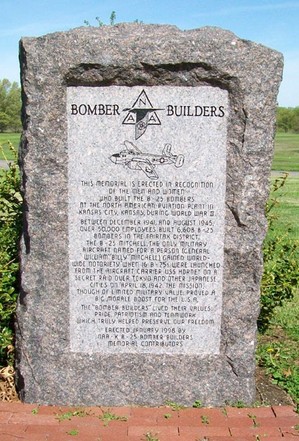
Testing the bomber: A worker at NAA-K tests .50 caliber Browning machine guns. More than 25 tests were performed on each gun.
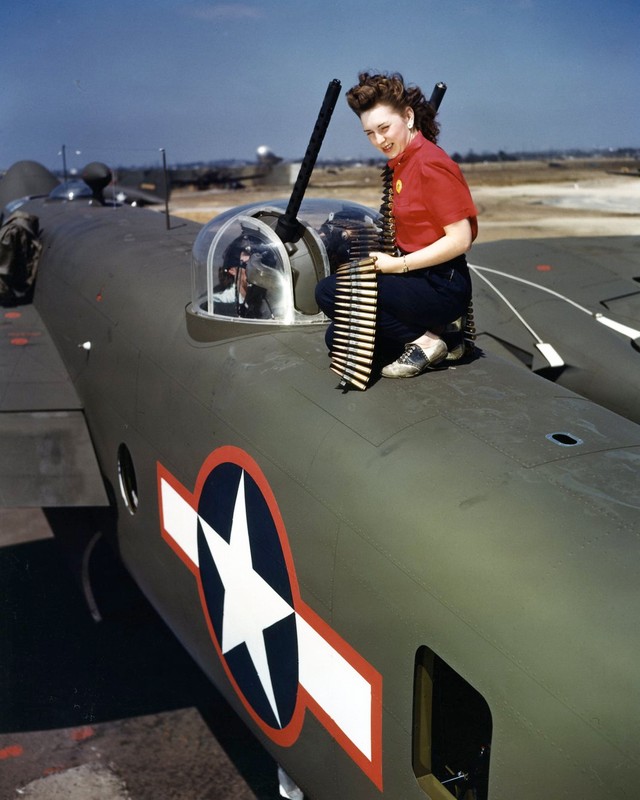
Inside the NAA-K plant where employees finished the final assembly of the B-25 bombers.
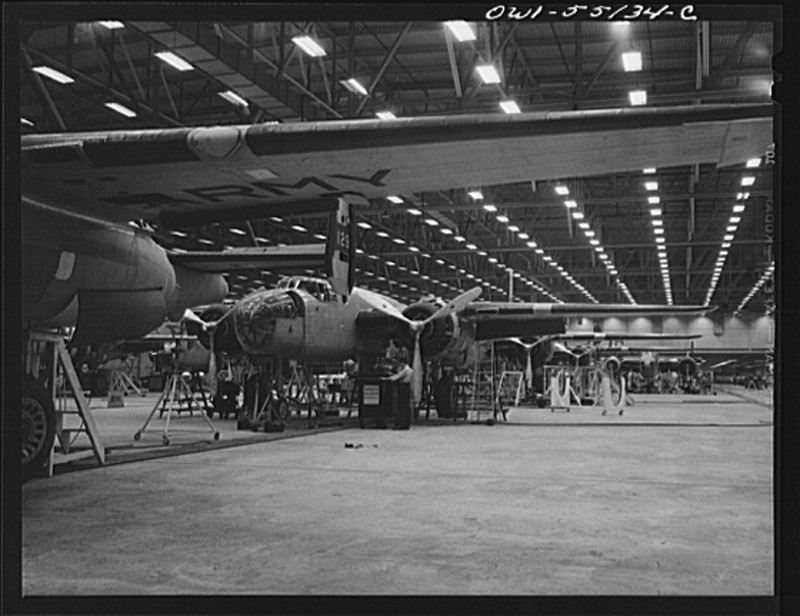
Employees shown assembling the B-25 bombers at the NAA-K plant.
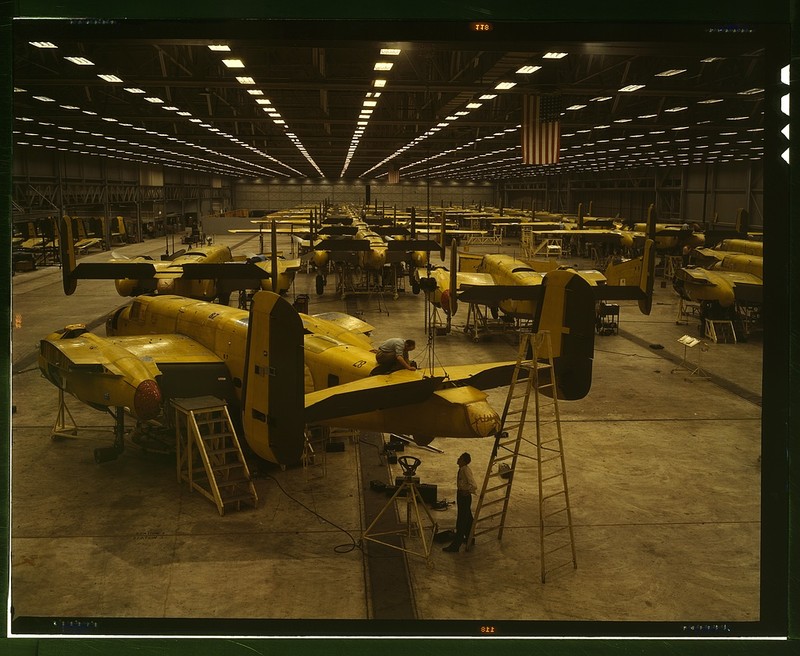
Newly finished B-25 bombers lined up for their first test flight at the NAA-K plant in October 1942.
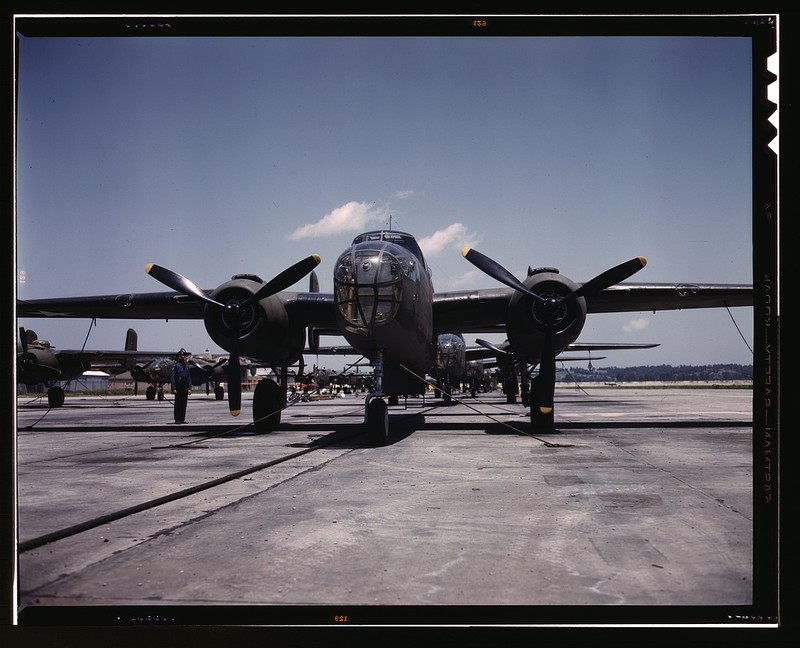
Employees shown using motorized transportation to navigate the over one million square foot plant.
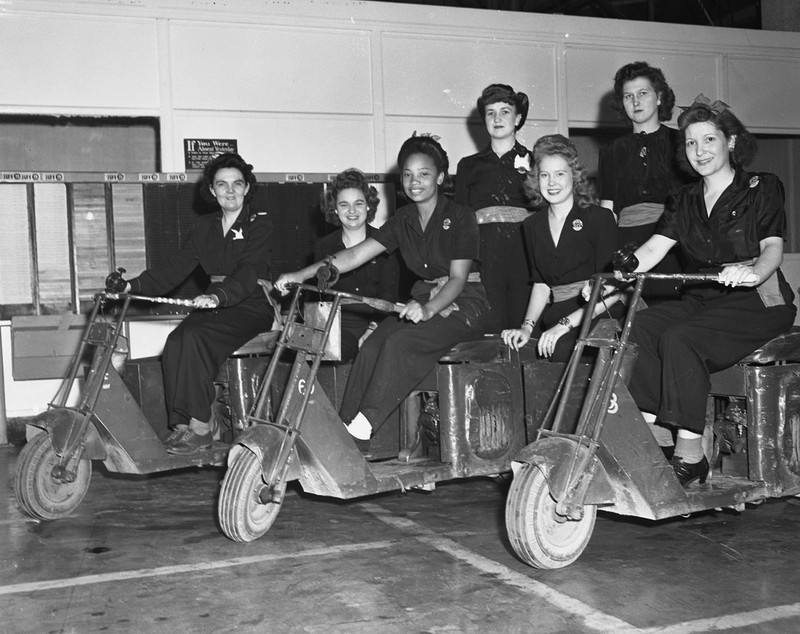
Shown: Employees assembling the wing skin of a B-25 bomber.
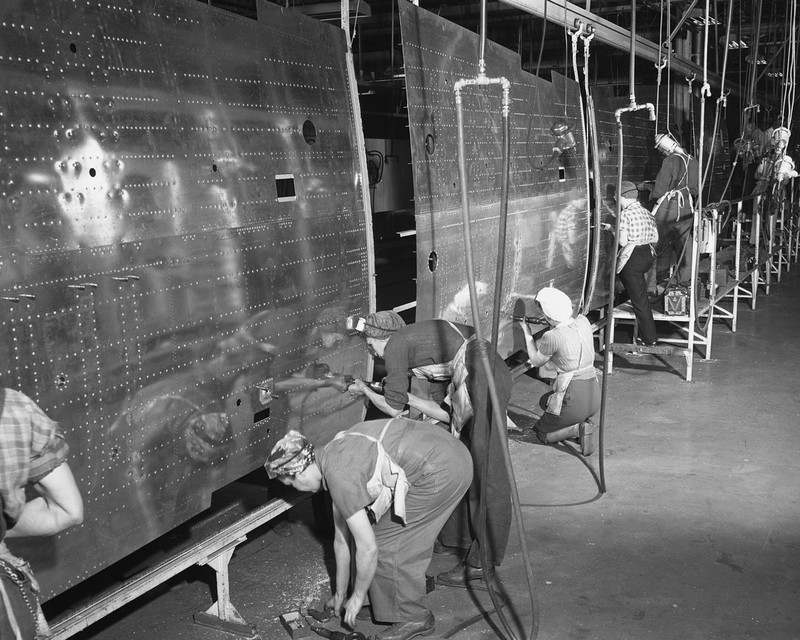
Illustrated Image depicting the NAA-K B-25 bomber factory in Kansas City, Kansas.
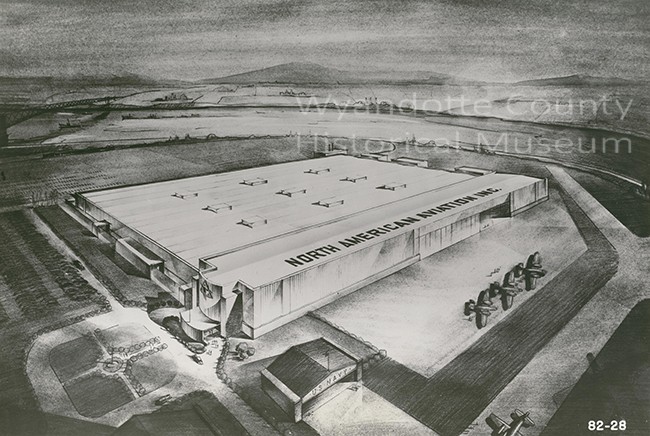
B-25 bomber finishes final indoor assembly and begins outdoor assembly.
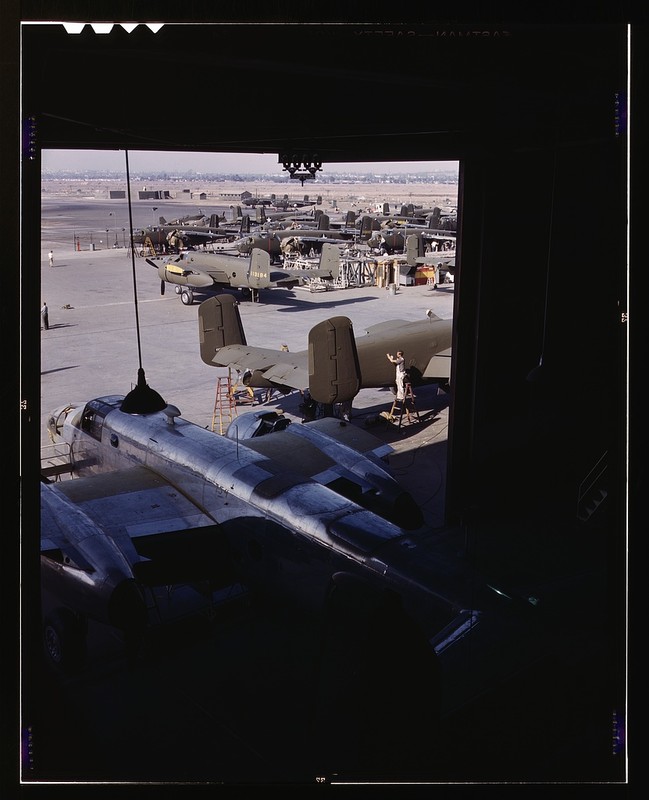
Employees shown assembling a B-25 bomber on an outside assembly line. The bomber is shown towed by a tractor along the assembly line.
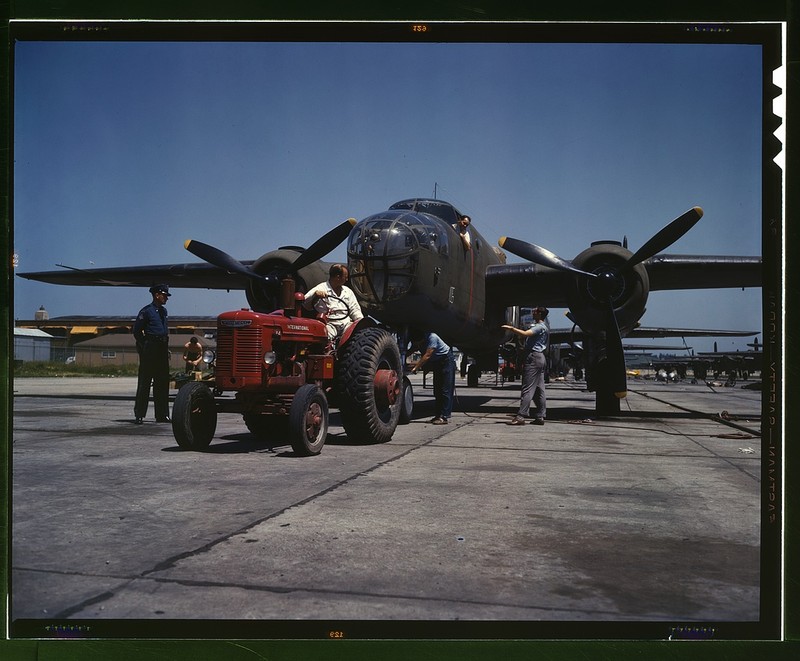
First B-25 bomber completed at the NAA-K plant on December 23, 1941.
.jpg)
Backstory and Context
Text-to-speech Audio
Following the attack at Pearl Harbor on December 7th, 1941, President Franklin Delano Roosevelt declared America's entry into World War II the following day. Roosevelt's first priority was to build manufacturing capacity to provide American and European allies with the weapons necessary to defeat the militaries of the Axis Powers. Roosevelt believed the United States had a unique capacity for industrial production, and Congress responded to the immediate need for weapons by appropriating $22 billion to defense spending. Many factories were not producing at their maximum capacity due to the economic struggles of the Great Depression in the 1930s. The government took control of these factories to shift the production from civilian goods to wartime necessities. The government also took steps to ensure these factories were operating at maximum capacity. Roosevelt announced production goals that few military or civilian leaders thought were possible. However, by 1942, the US had produced 300,000 aircraft, 100,000 tanks, 8,000 ships, 40 billion bullets, and 20 million rifles. By 1945, the US had produced half of the world’s armaments. The US intended to defeat the Axis powers with material superiority.
These production goals set by President Roosevelt meant more factories and millions more industrial workers were needed. With millions of men serving in the military, women represented half of the 15 million new employees and totaled a third of the total domestic workforce. Access to these jobs gave women freedoms and financial independence they had never achieved before. From this came the allegorical icon Rosie the Riveter who represented the women who worked in military defense production.
In the early phases of the war, factories across the United States were either built or transitioned to produce wartime necessities. This included the North American Aviation, Inc. plant that was built in Kansas City, Kansas in the Fairfax district. The US Army Air Corps chose to build the plant at this location rather than the typical east or west coast locations in an effort to avoid potential attacks from Japan or Germany. The Kansas City area also offered a significant population that could supply workers for the plant. The US government built and operated the plant but the plant was known under the name North American Aviation, Incorporated of Kansas, also known as NAA-K. The plant produced 6,608 B-25 bombers between December 1941 and August 1945.
NAA-K was more than one million square feet, an unprecedented factory size for the era. NAA-K employed more than 50,000 people, many of them women. An estimated 40,000 Kansas City residents left the area to serve in the war, leaving many job opportunities open to women. Women played a vital role in producing the B-25 bombers at NAA-K. An estimated 40% of the employees at NAA-K were women. 6,608 of the 9,816 B-25 bombers produced during World War II were produced at NAA-K. The plant closed in August of 1945. General Motors leased the plant in December of 1945, and the first car finished production in June of 1946.
The B-25 bombers were also known as ‘B-25 Mitchell’, named after General William ‘Billy’ Mitchell, who is regarded as the father of the US Air Force. This is notable because it is the only US aircraft named after a person. The B-25 bombers were notably used in the Doolittle Raid in April of 1942. This raid used 16 B-25 bombers constructed at the NAA-K plant to drop a series of bombs on Tokyo in response to the attack on Pearl Harbor. This attack did little more than challenge the belief among Japanese leaders that they were invulnerable at that stage as the attack was not covered in the local press and did minimal damage as was expected. However, the attack was never intended to do more than improve the morale of American citizens as it demonstrated the US Navy had responded to Pearl Harbor with an attack of their own and provided hope that a larger response was forthcoming.
The World War II Bombers Builder Memorial honors the men and women who built the 6,608 bombers during World War II. The memorial was erected by North American Aviation, Inc., in 1998 and seeks to recognize the pride, patriotism, and teamwork of the NAA-K employees. The monument depicts the logo of North American Aviation, Inc., an illustration of a bomber, and text that recognizes the men and women who built the B-25 bombers at the North American Aviation plant.
Cite This Entry
Trowbridge, David, Annie Mullen, and Clio Admin. "World War II Bomber Builders Monument." Clio: Your Guide to History. October 31, 2024. Accessed March 31, 2025. https://theclio.com/entry/154677
Sources
“Doolittle Raid.” Encyclopedia Britannica, Encyclopedia Britannica, Inc., https://www.britannica.com/event/Doolittle-Raid.
FDR Library. “World War II Facts.” FDR Presidential Library & Museum, https://www.fdrlibrary.org/wwii-facts.
KCK. “World War II Bomber Builders Monument.” Visit Kansas City, Kansas, https://www.visitkansascityks.com/listing/world-war-ii-bomber-builders-monument/84/.
Macias, Richard. “‘WE ALL HAD A CAUSE’ Kansas City’s Bomber Plant, 1941–1945.” KSHS, https://www.kshs.org/publicat/history/2005winter_macias.pdf.
Magazine, Smithsonian. “The Kansas City B-25 Factory.” Smithsonian.com, Smithsonian Institution, 11 June 2014, https://www.smithsonianmag.com/air-space-magazine/kansas-city-b-25-factory-180951624/.
Roe, Jason. “North American Aviation Plant.” The Pendergast Years, 1 Mar. 2018, https://pendergastkc.org/article/buildings-orgs/north-american-aviation-plant#:~:text=Author%3A,States%20entering%20World%20War%20II.
VKCK. “World War II Bomber Builders Monument.” Visit Kansas City, Kansas, https://www.visitkansascityks.com/listing/world-war-ii-bomber-builders-monument/84/.
https://www.hmdb.org/m.asp?m=46290
https://www.smithsonianmag.com/air-space-magazine/kansas-city-b-25-factory-180951624/
https://www.loc.gov/resource/fsa.8d42691/
https://www.loc.gov/item/2017878497/
https://www.loc.gov/item/2017878496/
https://www.smithsonianmag.com/air-space-magazine/kansas-city-b-25-factory-180951624/
https://www.smithsonianmag.com/air-space-magazine/kansas-city-b-25-factory-180951624/
https://ecommunity.kckpl.org/wwii/kck-plant.html
https://www.loc.gov/item/2017878496/
https://www.loc.gov/item/2017878494/

